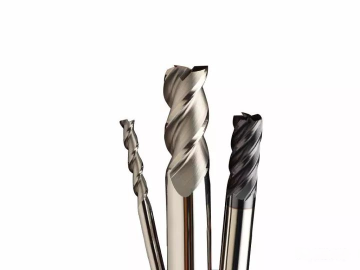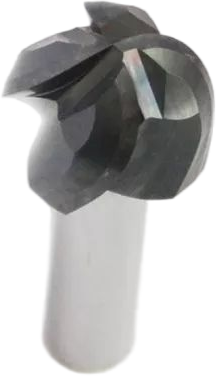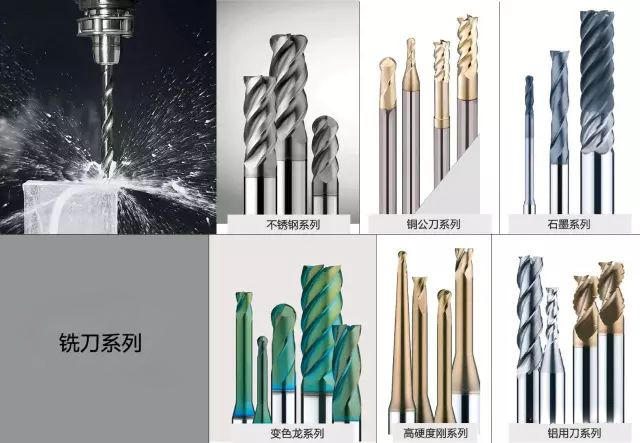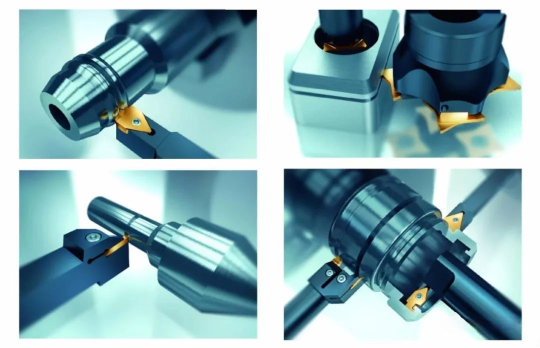
How to correctly understand the tool life of CNC machining?
In CNC machining, tool life refers to the time during which the tool tip cuts the workpiece or the actual length of the workpiece surface during the cutting process from the beginning of machining to the scrapping of the tool tip. Tool nose processing time is the main assessment index for tool companies to calculate tool life.
Generally, 15-20 minutes of continuous processing for each blade is the service life of the tool. Tool life is measured by each company in a relatively ideal state in the laboratory. According to different workpiece materials, different cutting depths and feed rates, the calculation is carried out according to the continuous processing of each blade for 15-20 minutes, and the relationship between the corresponding linear speed and feed rate is calculated, which constitutes the corresponding cutting parameter table, so every The cutting parameter table of each company is also different.

1. Can the tool life be improved?
The tool life is only 15-20 minutes, can the tool life be further improved? Clearly, tool life can easily be increased, but only at the expense of line speed.
The lower the linear speed, the more obvious the increase of tool life (but too low linear speed will cause vibration during processing, which will reduce the tool life).
2. Is there any practical significance to improve tool life?
In the processing cost of the workpiece, the proportion of tool cost is very small. If the line speed is reduced, even if the tool life increases,
the machining time of the workpiece will also increase accordingly. The number of workpieces processed by the tool will not necessarily increase,
but the cost of workpiece processing will increase.
What needs to be correctly understood is that it is meaningful to increase the number of workpieces processed
as much as possible while ensuring the machining life of the tool as much as possible.
3. Factors Affecting Tool Life
1. Line speed
Line speed has the greatest impact on tool life. If the line speed is 20% higher than the specified line speed of the sample, the tool life will be reduced to 1/2 of the original;
if it is increased to 50%, the tool life will only be 1/5 of the original. In order to improve the service life of the tool,
it is necessary to know the material and state of each workpiece to be processed and the linear speed range of the selected tool.
Each company's cutting tools have different linear speeds. You can conduct a preliminary search from the relevant samples provided by the company,
and then adjust according to the specific conditions during processing to achieve a more ideal effect.
The data of the line speed during rough machining and finish machining are not consistent.
The rough machining is mainly to remove the allowance, and the line speed should be low; the finish machining is mainly to ensure the dimensional accuracy and roughness,
and the line speed should be high.

2. Depth of cut
Depth of cut has less effect on tool life than line speed. Each groove type has a relatively large range of depth of cut.
During rough machining, the depth of cut should be increased as much as possible to ensure the maximum stock removal rate; during finishing machining,
the depth of cut should be as small as possible to ensure the dimensional accuracy and surface quality of the workpiece.
But the depth of cut cannot exceed the cutting range of the groove. If the depth of cut is too large, the tool cannot withstand the cutting force, resulting in tool chipping;
if the depth of cut is too small, the tool will only scrape and squeeze the surface of the workpiece, resulting in severe wear of the flank surface, thereby reducing tool life.
3. FeedCompared with line speed and depth of cut, feed has the least impact on tool life, but has the greatest impact on workpiece surface quality.
During rough machining, increasing the feed rate can increase the removal rate of the allowance; during finishing machining,
decreasing the feed rate can improve the surface roughness of the workpiece. When the roughness permits,
the feed can be increased as much as possible to improve the processing efficiency.

4. Vibration
Vibration is the factor that has the greatest impact on tool life in addition to the three major cutting elements. There are many reasons for the vibration, including the rigidity of the machine tool, the rigidity of the tooling, the rigidity of the workpiece, the cutting parameters, the tool geometry, the radius of the tool nose arcthe back angle of the blade, the overhang length of the tool bar, etc.,but the main reason is that the system is not rigid enough to resist The cutting force during processing causes the tool to vibrate continuously on the surface of
the workpiece during processing. To eliminate or reduce vibration must be considered comprehensively.
The vibration of the tool on the surface of the workpiece can be understood as the constant knocking between the tool and the workpiece, instead of normal cutting,
which will cause some tiny cracks and chipping on the tip of the tool, and these cracks and chipping will lead to increased cutting force. Large,
the vibration will be further aggravated, which in turn will further increase the degree of cracks and chipping, which will greatly reduce the tool life.
5. Blade material
When processing workpieces, we mainly consider the material of the workpiece, heat treatment requirements, and whether to process intermittently.
For example, the blades for processing steel and the blades for processing cast iron, and the blades for processing hardness of HB215 and HRC62 are not necessarily the same;
the blades for intermittent processing and continuous processing will not be the same. Steel blades are used to process steel parts,
casting blades are used to process castings, CBN blades are used to process hardened steel, and so on. For the same workpiece material,
if it is continuous processing, use a blade with higher hardness, which can increase the cutting speed of the workpiece, reduce tool tip wear, and reduce processing time;
if it is intermittent processing, use a blade with better toughness. It can effectively reduce abnormal wear such as chipping and improve tool life.
6. Number of blades used
During the use of the tool, a large amount of heat will be generated, which will greatly increase the temperature of the blade,
and when it is not processed or cooled with cooling water, the temperature of the blade will decrease. Therefore, the blade is always in a relatively high temperature range.
The blade is constantly expanding and contracting, causing tiny cracks in the blade. When the insert is machined with the first edge, the tool life is normal;
but as the use of the edge increases, the crack will propagate to the other edges, resulting in a reduction in the life of the other edges.

4. Within the range of tool life, can the number of workpieces processed be increased?
Since the tool life is only 15-20 minutes, within the range of the tool life,
the effective length of the tool cutting the workpiece determines the actual number of workpieces to be processed.
To increase the number of workpieces processed means reducing the processing time and cutting length of a single workpiece.
The machining time of the workpiece can be reduced by properly adjusting the cutting parameters of the tool:
1. Within a reasonable line speed range, properly increasing the line speed cannot reduce the processing length of the workpiece,
but can shorten the processing time of the workpiece;
2. The increase of the cutting depth can reduce the number of rough machining, reduce the effective cutting length of the workpiece, thereby shortening the processing time;
3. Appropriately increasing the feed rate can also effectively reduce the cutting length and shorten the processing time.
